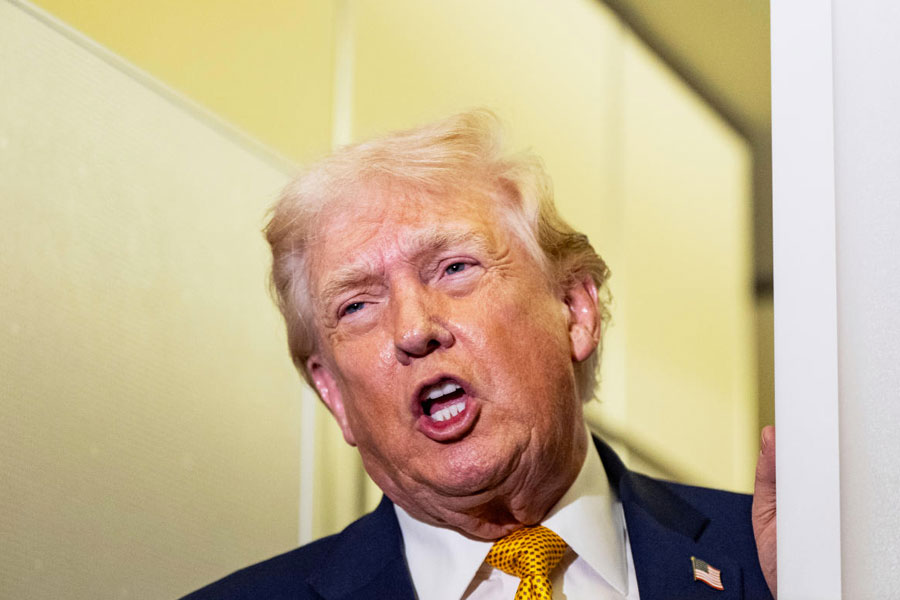 |
 |
 |
| SHORT CUTS: (From top) Stills from Kaminey, Love Aaj Kal and Quick Gun Murugan |
Short is sweet — and Bollywood has woken up to this adage. Taking a cue from its Western counterparts, the Mumbai Hindi cinema industry is churning out films that are shorter and crisper. There was a time when films ran for three hours or more. Now, commercial films are downsizing — and keeping the box office cash registers ringing.
Take a look at this year’s big releases. Kaminey and Love Aaj Kal were just about two hours long. The South Indian Western spoof Quick Gun Murugan was of 90 minutes’ duration. Small budget films such as Mohandas and Chintuji were appreciated for their realistic portrayal of characters and running time.
The industry believes that changing audience tastes are responsible for this new trend. An emerging urban middle class with a disposable income and a short attention span is looking for things that are faster and quicker. “Cinema cannot belie audience sensibilities. We have to shed extra fat everywhere and Bollywood is no different,” says writer-director Imitiaz Ali. His films Jab We Met and Love Aaj Kal, both commercial hits, had a running time of two hours and 10 minutes.
Of course, Bollywood had earlier rolled out films that were of shorter duration. But those were exceptions. Now, industrywallahs stress, shorter films are the norm.
When Sanjay Leela Bhansali made Black in 2005 he knew he was testing new waters. A movie without a single song and kept at a running time of less than two hours was the litmus test for Bollywood. But Black was well appreciated, prompting many to follow suit. A spate of new films — such as Mixed Doubles, Bheja Fry, Khosla ka Ghosla and Black Friday — followed and kept the multiplex audiences happy.
The trend reflects pure economics, explains trade analyst Vajir Singh, executive editor, Box Office India. “With smaller movies, production costs are lower and revenue generation is high,” says Singh. Movies such as Kaminey and Love Aaj Kal benefited from their short running time. The box office collection of each of the two films has crossed Rs 50 crore in the last one month.
Collections are high because multiplexes are able to run back-to-back shows when a film restricts itself to two hours or so. Kaminey had as many as 26 shows on a single day in a prominent multiplex in Mumbai while the single screen benefited by having six shows instead of the usual four. “Shorter movies mean more shows and therefore more revenue for the multiplexes,” says Alok Tandon, CEO, INOX, a chain of multiplexes in metros. “It also has an impact on our food and beverage sales as more shows mean more footfalls and more intervals,” he adds.
The growing threat of piracy too has had its impact on the way movies are being made. “To combat piracy, moviemakers now release DVDs within two to three weeks of the opening of a movie. As a result, cinema halls need to have more shows to recover costs,” explains Singh. This is only possible when a film sticks to 14 reels rather than the usual 17 reels.
While moviemakers are snipping away, audiences too are a happy lot. A burgeoning texting population and diminishing attention spans have led to the mantra of “less is more”. The problem of plenty on cable television and the growing availability and popularity of foreign films have made filmmakers realise the power of brevity. “Thanks to our audiences the indulgences of the past are over,” says Ali.
Delhi-based sociologist Patricia Uberoi believes that a global phenomenon is at work. “Society thrives on instant gratification and filmmakers are now working on those formulae,” says Uberoi. “We understand that we have to say more in a stipulated time period and that makes the work of an editor even tougher,” says film writer and editor Ashmith Kunder.
Bollywood, which used to run on a staple formula of half a dozen songs and couple of fight sequences in every film, has now shunned its image of yore. “The music industry is dying a slow and painful death. Most movies now have two or three-odd songs,” says Komal Nahta, editor of the trade journal Film Information. To save time and cost, films often open and close with songs. Though Love Aaj Kal had seven songs, most of them were cleverly woven into the narrative to cut on time.
Bollywood’s growing foray into Western market too has had its influence on the editing table. “Our movies now are touted in international film festivals and the length of the film always matters,” says a film critic. He cites the example of Lagaan which with its 3-hour and 44-minute duration failed to impress jury members at the Academy Awards.
“We have to grab audience attention,” says director Mazhar Kamran, whose latest directorial venture Mohandas, with a running time of less than two hours, was critically acclaimed. “We modelled our cinema for a select audience and it has done well in the targeted segment,” says Kamran. The highlights of Mohandas were its short songs and brief portrayal of characters.
Directors such as Vishal Bhardwaj are sticking to tighter scripts. Audiences no longer need to be spoon fed and scripts often run on an overnight story. “Unless you have something extraordinary to tell, you can stick to a tighter script,” says Ali who kept the time factor in mind while penning Jab We Met.
But not everyone is happy. Some miss those old films such as Sholay and Hum Aapke Hain Kaun which ran for over three hours — and gave a viewer his money’s worth of cinema. “Not everyone would identify a strict narrative as a pure form of entertainment,” warns Uberoi. “Personally, I feel cheated when I don’t get my three-hour dose of entertainment,” says Nahta. But Bollywood is not listening — after all, it’s running out of time.










